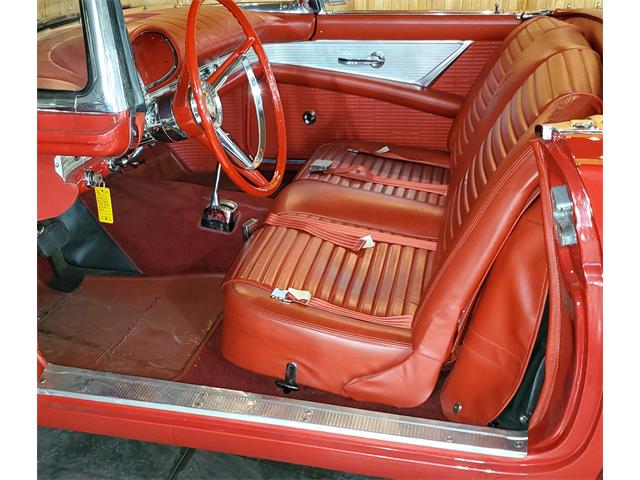










Ford’s final offering of the first-generation Thunderbird in 1957 is considered by many auto enthusiasts to be a fitting close to the company’s end of two-seat passenger cars. Aided by an extended sales period due to delays in the production of the 1958 model, Ford sold 21,380 units of the car many credit for creating the personal luxury car market we still have today. The 1957 models featured redesigned front and rear bumpers, doors and rear fenders as well as new tail lights and instrument panel. There were also new upholstery designs for the seat and door panels. Officially the Ford company line was that the Thunderbird was not intended to be a direct competitor to Corvette, marketed by General Motors as a sports car, the reality was that the many similarities of the two vehicles invited comparison by the motoring public. Ford’s decision to add higher performance engines for the 1957 models as options seemed to encourage that comparison despite the company’s official stance. It has been suggested that the performance options, coupled with the cosmetic changes, gave the Thunderbird a more masculine feel and appearance. There were four engine options for the 1957 Thunderbird, engine all based on Ford’s Y-block V8. The 292 cubic inch (C code) was standard equipment, while a higher displacement 312 cubic inch powerplant with a single four-barrel carburetor (D code) was the most popular choice on the order form. There were 1,499 Thunderbirds equipped with a 312 cubic inch engine that featured two four-barrel carbs (E code) and just 188 units were built with the coveted supercharged 312 cubic inch engine (F code). Both the E code and f code cars are significantly rare, as their combined sales account for just less than eight percent of total production. This car is one of the 1,499 F code cars built for the 1957 model year, built in Ford’s Dearborn (MI) assembly plant on December 13, 1956. The trim tag data indicated the car left the factory in Flame Red with a matching Flame Red interior, while the car’s VIN proves the car was built with the 272 horsepower E code powerplant. The present owner acquired this vehicle in January 2004 and it has been driven very few miles under his ownership stored in a humidity-controlled environment. At some point prior to that purchase this vehicle was treated to a body-off rotisserie restoration evidenced by a binder of photos documenting different parts of the restoration process that came with the car. Also included in that binder is a car with cam specs so we assume there was engine work done at the time of restoration but cannot say to what level. The car presents beautifully today with the correct Red Flame (Code V) paint and proper Flame Red (Code XH) interior and the brightwork is excellent. The car is equipped with a black convertible top and a porthole hardtop matching the exterior color. The car is optioned with power steering, power windows, automatic transmission and the engine dress-up kit. The optional wire spoke wheels are wrapped with period-correct wide whitewall tires.